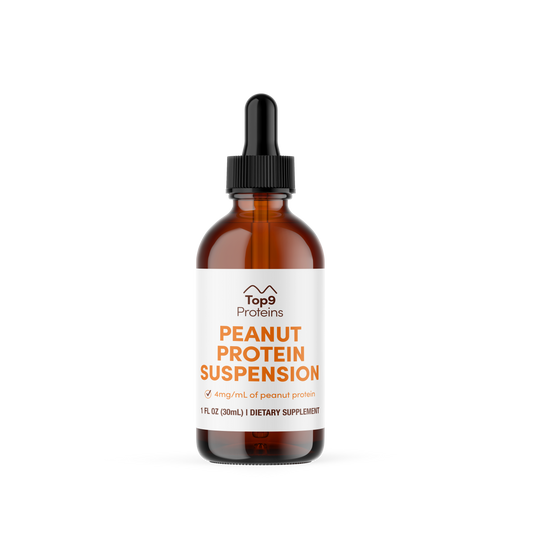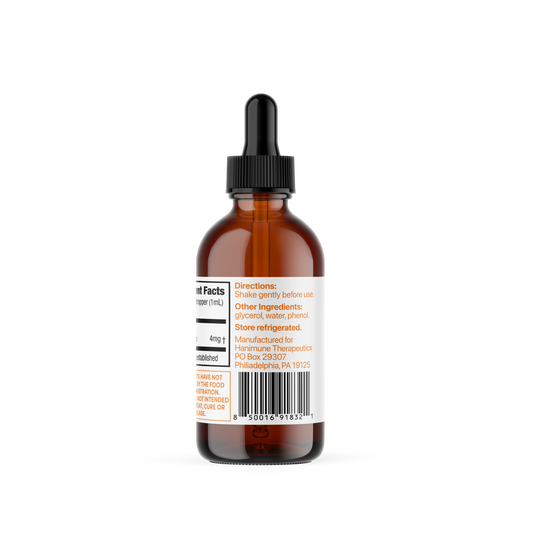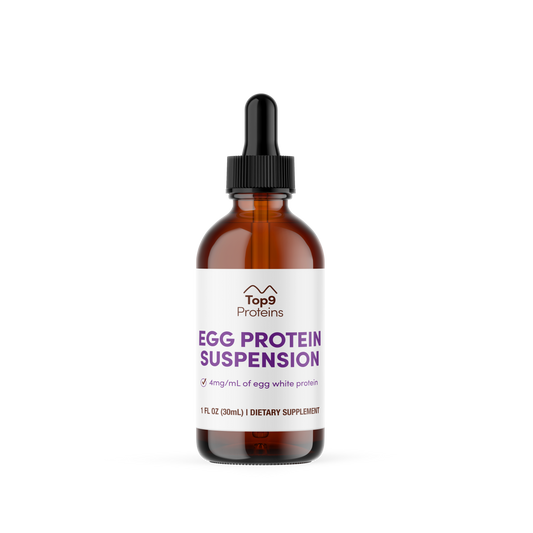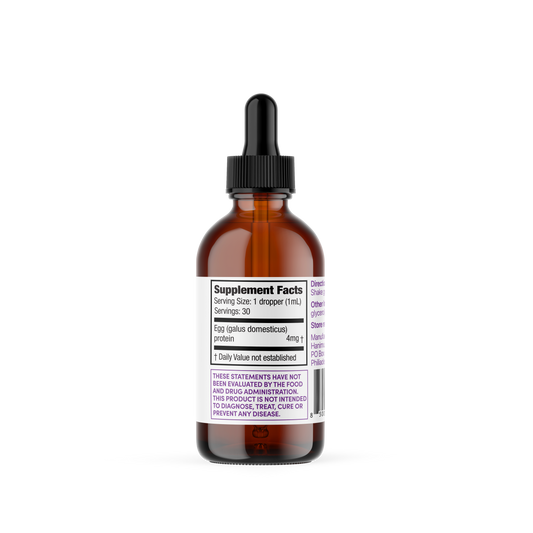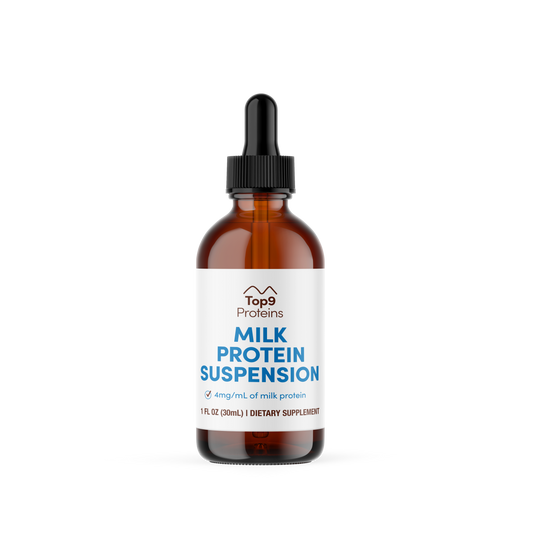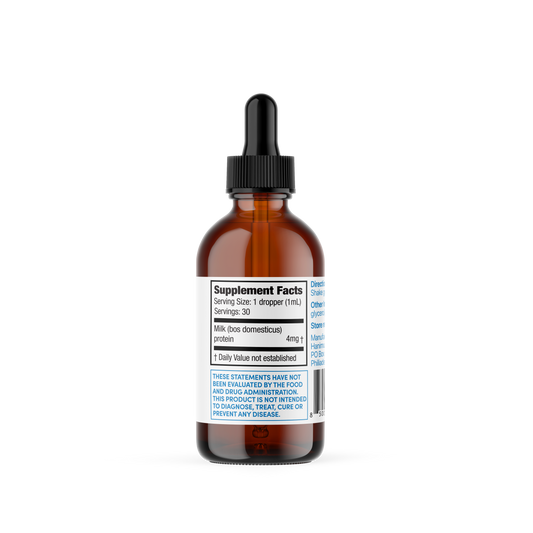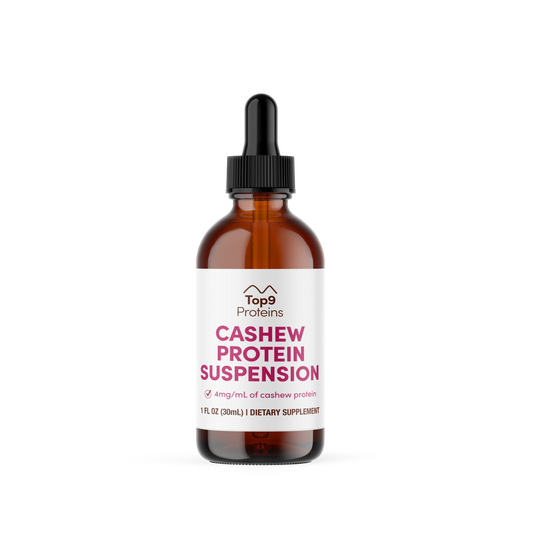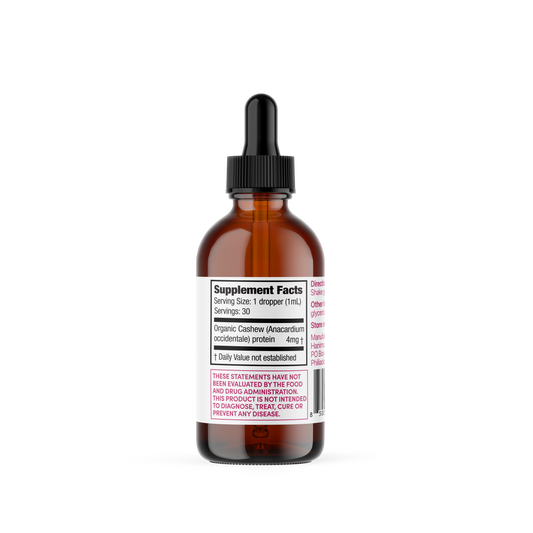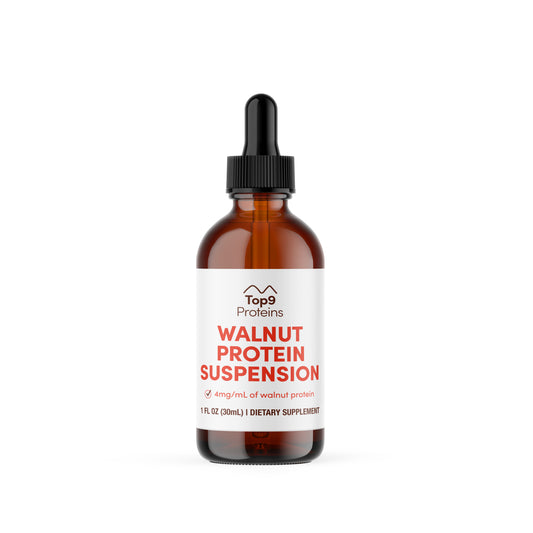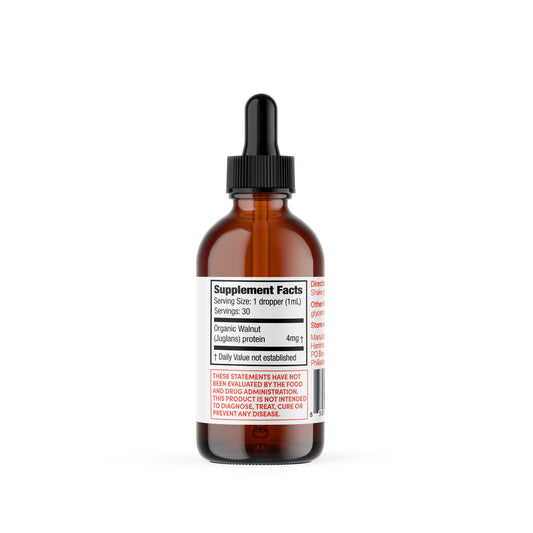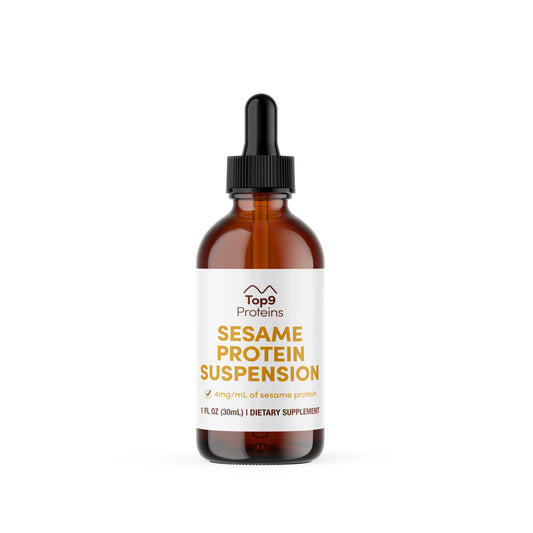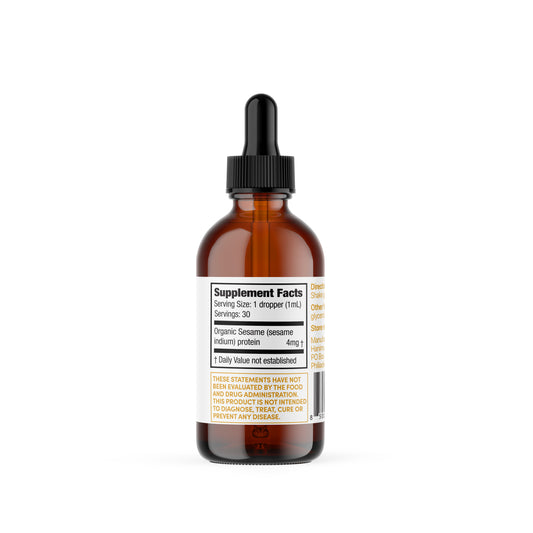Food is a complex combination of proteins, fats, carbohydrates and more that interact with each other. Each food has multiple proteins which can trigger IgE-mediated allergic responses, and many proteins that do not.
Different plant varietals, growing seasons, and growing conditions can change the make-up of a food. Within this variability of peanuts, less than 50% of a peanut is protein. The major allergens such as Ara h 1, 2, 3, and 6, comprise less than 25% of the total protein. And finally, different processing (roasting, grinding, chemical solvents used in extraction, etc) will change the structures of or leach different proteins.
A peanut is not simply a peanut.
Top9Proteins was created to provide a consistent source of fully characterized food proteins to empower everyone with an interest in the top 9 proteins. We use a combination of analytic methods as each has strengths and weaknesses.
High-performance liquid chromatography (HPLC)
HPLC is an analytical chemistry technique used to separate compounds in a mixture. The technique utilizes physicochemical properties of the components of the mixture, such as size, charge, polarity, and volatility to separate them from each other. The data output of an HPLC analysis is called a chromatogram, where the x-axis shows when a component separated, and the y-axis measures the amount of that component.
HPLC can be used to confirm the absence of unexpected materials or contaminants. It can also be used to demonstrate how a component has changed - the physicochemical properties of a natural protein and its denatured version are different. Top9Proteins uses HPLC in quality control to verify the integrity and purity of incoming food proteins from our partner suppliers or finished products, as well as the changes in protein structures in our hypoallergenic proteins.
Protein Nitrogen Testing
Protein nitrogen testing is a method used to determine the total protein content in a food. Protein typically contains 16% nitrogen, which allows for the quantification of protein based on the amount of nitrogen extracted. Protein percentages do vary (Mariotti) and an accurate result depends on using the correct conversion factor. Furthermore, whole foods may contain non-protein nitrogen (NPN) that needs to be accounted for.
Top9Proteins sources purified and concentrated proteins to reduce the non-protein nitrogen. Total protein is quantified in an external laboratory using USP validated methods to create a consistent understanding of total protein content in each lot.
Enzyme-Linked Immunosorbent Assay (ELISA)
ELISA is an analytical method that allows for the identification and quantification of specific proteins based on their response to, or binding to, antibodies. The basic ELISA method adds a material of different known concentrations to a series of plate wells, followed by a known amount of antibodies. The resulting binding, typically indicated by a change in color, allows for the quantification of the amount of protein (for example) in the well, relative to a known standard.
Top9Proteins uses ELISA for different purposes:
-
Measure the total amount of a specific protein (i.e Ara h 2, or Gal d 1). Can also be used to quantify total protein
-
Quantify the amount of a specific protein in its conformational structure
-
Quantify the reactivity of a protein mixture or a specific protein to human IgE antibodies
Western Blotting
Western blotting is a laboratory technique used to identify and analyze specific proteins within a complex mixture of proteins. It combines gel electrophoresis to separate proteins by size, electrophoretic transfer to hold them on a membrane, and antibody detection to visualize the protein of interest.
Protein samples are first separated based on their molecular weight using gel electrophoresis. The separated proteins are then treated to limit their binding to the specific antibodies of interest. The presence of the target protein becomes visible, producing a clear picture of how the starting protein mixture is responding to the antibodies. This method is effective in demonstrating the presence of specific proteins in a mixture, as well as changes in a protein mixture from processing.
François Mariotti, Daniel D. Tomé, Philippe Patureau Mirand. Converting Nitrogen into Protein – Beyond 6.25 and Jones’ Factors. Critical Reviews in Food Science and Nutrition, 2008, 48 (2), pp.177-184. 10.1080/10408390701279749[\caption}


